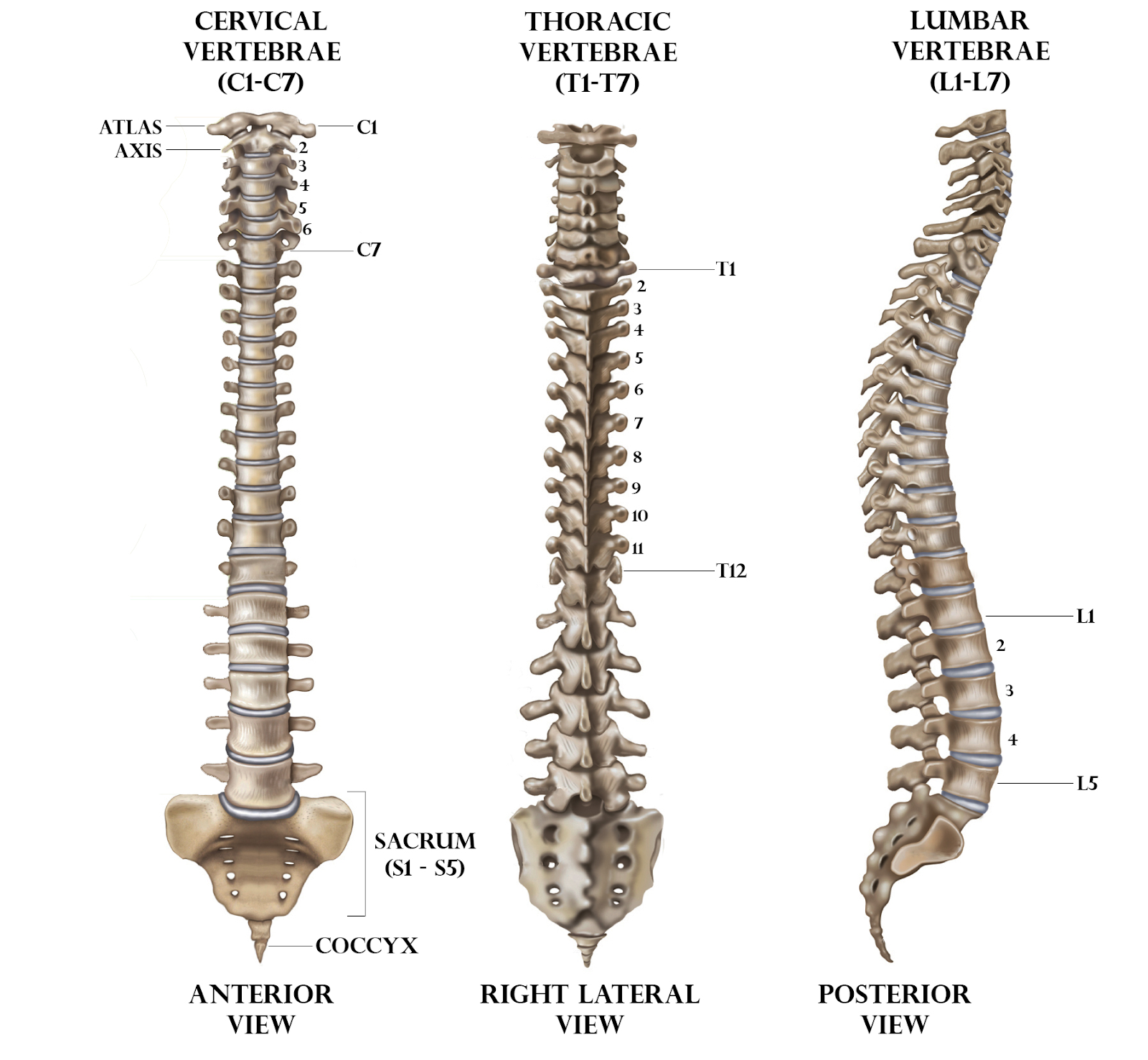
How do spinal nerves exit the spinal cord?
Answer
528.3k+ views
Hint: The spinal string is associated with the mind stem and conveys various engine and tactile parcels. The situation of the white issue and dark issue is inverse to the mind. The white issue is in the fringe and the dark issue is focal and has a butterfly shape. At each level, a spinal nerve root leaves the spinal line and has an explicit engine and tactile capacities. The spinal string regularly ends somewhere in the range of T12 and L2, which clarifies why we perform lumbar penetrates beneath L2.
Complete answer:
Spinal Nerve Roots: Each comparing nerve establishes exits the spine in a particular example and this example varies between the cervical and the thoracic/lumbar areas. The spinal nerves leave the cervical spine over their comparing vertebral body level. For instance, the C7 nerve root exits above C7 through the C6-C7 neural foramen. C8 exits in the middle of T1 and C7 since there is no C8 vertebral body level. This direction is switched in the thoracic and lumbar spine. The T and L spinal nerve roots exit beneath their comparing vertebral body level. For instance, the L3 nerve root exits underneath L3 through the L3-L4 foramen. It is critical to realize which nerve root exits which foramen to comprehend if a patient's radiculopathy manifestations can be clarified by a particular anatomic unhinging.
Vertebral Segments: There are highlights that are normal to all vertebral sections and others that are remarkable to each level. Except for C1, each fragment has a vertebral body, which is the front part of the vertebral section. The prevalent and sub-par parts of the vertebral body are alluded to as the endplates which give nourishment to the neighboring circle. The body is associated with the back components by respective pedicles which are direct hard swaggers.
Additional information:
The back components comprise the pedicles, lamina, features (particular cycle), crossover cycle, and spinous cycle.
The Disk: Each vertebral body section is appended to the level above and beneath by an intervertebral plate.
The plate has a few capacities:
1) It fills in as an association between the vertebral bodies
2) It goes about as a rotate point
3) Distribute compressive powers
Note:
The plate is made of the Nucleus Pulposus and the Annulus Fibrosus:
Core Pulposus: Central segment of the plate, has a coagulated consistency and is made of ${H_2}0$ and proteoglycan.
Annulus Fibrosus: Outer layer of the plate, has a stringy consistency and is made of concentric collagen rings.

Complete answer:
Spinal Nerve Roots: Each comparing nerve establishes exits the spine in a particular example and this example varies between the cervical and the thoracic/lumbar areas. The spinal nerves leave the cervical spine over their comparing vertebral body level. For instance, the C7 nerve root exits above C7 through the C6-C7 neural foramen. C8 exits in the middle of T1 and C7 since there is no C8 vertebral body level. This direction is switched in the thoracic and lumbar spine. The T and L spinal nerve roots exit beneath their comparing vertebral body level. For instance, the L3 nerve root exits underneath L3 through the L3-L4 foramen. It is critical to realize which nerve root exits which foramen to comprehend if a patient's radiculopathy manifestations can be clarified by a particular anatomic unhinging.
Vertebral Segments: There are highlights that are normal to all vertebral sections and others that are remarkable to each level. Except for C1, each fragment has a vertebral body, which is the front part of the vertebral section. The prevalent and sub-par parts of the vertebral body are alluded to as the endplates which give nourishment to the neighboring circle. The body is associated with the back components by respective pedicles which are direct hard swaggers.
Additional information:
The back components comprise the pedicles, lamina, features (particular cycle), crossover cycle, and spinous cycle.
The Disk: Each vertebral body section is appended to the level above and beneath by an intervertebral plate.
The plate has a few capacities:
1) It fills in as an association between the vertebral bodies
2) It goes about as a rotate point
3) Distribute compressive powers
Note:
The plate is made of the Nucleus Pulposus and the Annulus Fibrosus:
Core Pulposus: Central segment of the plate, has a coagulated consistency and is made of ${H_2}0$ and proteoglycan.
Annulus Fibrosus: Outer layer of the plate, has a stringy consistency and is made of concentric collagen rings.

Recently Updated Pages
Master Class 12 Business Studies: Engaging Questions & Answers for Success

Master Class 12 Economics: Engaging Questions & Answers for Success

Master Class 12 English: Engaging Questions & Answers for Success

Master Class 12 Maths: Engaging Questions & Answers for Success

Master Class 12 Social Science: Engaging Questions & Answers for Success

Master Class 12 Chemistry: Engaging Questions & Answers for Success

Trending doubts
What is meant by exothermic and endothermic reactions class 11 chemistry CBSE

Which animal has three hearts class 11 biology CBSE

10 examples of friction in our daily life

One Metric ton is equal to kg A 10000 B 1000 C 100 class 11 physics CBSE

1 Quintal is equal to a 110 kg b 10 kg c 100kg d 1000 class 11 physics CBSE

Difference Between Prokaryotic Cells and Eukaryotic Cells




